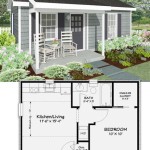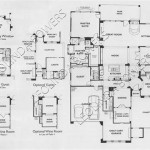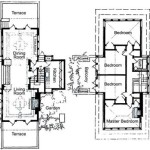Floor Plans For My Home: A Comprehensive Guide
Creating a home starts with a vision and that vision is best translated into a detailed floor plan. A floor plan is a scaled diagram of a room or building viewed from above, illustrating the relationships between rooms, spaces, and other physical features. It is a fundamental document in architecture, interior design, and real estate, serving as the blueprint for construction, renovation, and space planning. The purpose of this article is to provide a comprehensive guide to understanding and creating floor plans for a home.
Floor plans represent the spatial arrangement of a dwelling, showcasing the dimensions of each room, the location of doors and windows, and the placement of key fixtures such as sinks, toilets, and major appliances. They also indicate structural elements like walls, columns, and staircases. Beyond just spatial layout, a well-designed floor plan considers functionality, flow, and the overall living experience. A poorly designed floor plan can lead to inefficient use of space, awkward traffic patterns, and compromised comfort. Conversely, a thoughtfully designed floor plan maximizes space utilization, enhances the flow between rooms, and contributes to a more harmonious and enjoyable living environment.
There are various types of floor plans tailored to different needs. A basic floor plan focuses solely on the layout and dimensions of the rooms. A furniture plan incorporates the placement of furniture to visualize the usability of the space. Electrical plans show the location of outlets, switches, and lighting fixtures. Plumbing plans detail the location of pipes, water heaters, and other plumbing components. Depending on the complexity of the project, a combination of these plans may be necessary to provide a full picture of the home's design.
Key Point 1: Understanding the Importance of Floor Plans
The creation of a floor plan is an essential step in any home-related project, whether it involves new construction, remodeling, or simply rearranging furniture. These plans serve as the primary communication tool between homeowners, architects, contractors, and interior designers. A well-defined floor plan ensures that everyone involved is on the same page, reducing the likelihood of misunderstandings and costly errors.
One of the primary benefits of a floor plan is its ability to visualize the space before construction begins. By examining the plan, homeowners can assess the size and shape of each room, the relationship between different areas, and the overall flow of the house. This allows them to identify potential problems or areas for improvement early in the process. For example, a homeowner might realize that a hallway is too narrow or that the kitchen lacks sufficient counter space.
Floor plans are also crucial for effective space planning. They enable homeowners to experiment with different furniture arrangements and layouts to optimize the use of available space. By considering factors such as traffic flow, natural light, and the intended function of each room, a homeowner can create a layout that is both functional and aesthetically pleasing. This is especially important in smaller homes where maximizing space is a key consideration.
For remodeling projects, floor plans are essential for defining the scope of work and obtaining accurate cost estimates. They allow contractors to assess the existing structure, identify any potential challenges, and develop a detailed plan of action. By having a clear and accurate floor plan, contractors can provide more accurate bids and minimize the risk of unexpected costs or delays. Additionally, detailed floor plans are often required for obtaining building permits, ensuring that the remodeling project complies with local building codes and regulations.
Furthermore, floor plans play a significant role in property valuation and real estate transactions. They provide potential buyers with a clear understanding of the property's layout, size, and features. A well-prepared floor plan can enhance the marketability of a home and make it easier for buyers to visualize themselves living in the space. Including a floor plan in a real estate listing can also help to attract more qualified buyers and expedite the sale process.
Key Point 2: Methods for Creating Floor Plans
Creating a floor plan can be accomplished through several methods, each with its own advantages and disadvantages. The traditional approach involves using manual drafting techniques, employing tools such as pencils, architectural scales, T-squares, and templates. This method requires a strong understanding of architectural conventions and drafting principles. However, it offers a high degree of precision and control.
Another approach is to use computer-aided design (CAD) software. CAD programs like AutoCAD, Revit, and SketchUp are widely used by architects and designers to create detailed and accurate floor plans. These programs offer a range of features, including the ability to draw precise lines and shapes, add dimensions and annotations, and generate 3D models. While CAD software requires a certain level of technical expertise, it offers significant advantages in terms of speed, accuracy, and flexibility. CAD plans can easily be modified and shared electronically, making them ideal for collaborative projects.
A third option is to use online floor plan creation tools. Several websites and apps offer user-friendly interfaces and drag-and-drop functionality, making it easy for non-professionals to create basic floor plans. These tools typically offer pre-designed templates, libraries of furniture symbols, and automatic dimensioning features. While online floor plan tools may not offer the same level of precision and control as CAD software, they are a convenient and affordable option for creating simple floor plans for personal use.
Regardless of the method chosen, it is important to start with accurate measurements of the existing space. This can be accomplished using a measuring tape or a laser distance meter. It is crucial to measure all walls, doorways, windows, and other architectural features. The measurements should be recorded carefully and double-checked to ensure accuracy. Once the measurements are obtained, they can be used as the basis for creating the floor plan.
When drawing the floor plan, it is important to maintain a consistent scale. A common scale for residential floor plans is 1/4 inch equals 1 foot, meaning that every 1/4 inch on the drawing represents 1 foot in the actual space. Using a consistent scale ensures that the floor plan is accurate and proportional. It is also important to use standard architectural symbols to represent doors, windows, and other features. This ensures that the floor plan is easily understood by anyone who is familiar with architectural conventions.
Key Point 3: Considerations for Effective Floor Plan Design
Beyond the technical aspects of creating a floor plan, several design considerations can significantly impact the functionality and livability of a home. One of the most important considerations is the flow of traffic. The floor plan should be designed to facilitate easy and natural movement between rooms. Avoid creating bottlenecks or dead ends that can disrupt the flow of traffic. Consider the placement of doorways and hallways to ensure that they provide convenient access to different areas of the house.
Another key consideration is the placement of rooms in relation to each other. The optimal arrangement of rooms will depend on the specific needs and lifestyle of the homeowner. However, some general principles apply. For example, it is often desirable to locate the bedrooms away from noisy areas such as the kitchen and living room. The kitchen should be located near the dining area for convenient meal service. And the bathrooms should be easily accessible from all areas of the house.
Natural light is another important factor to consider in floor plan design. Maximize the amount of natural light in each room by positioning windows strategically. Consider the orientation of the house and the path of the sun throughout the day when determining the placement of windows. Large windows and skylights can bring abundant natural light into the home, creating a more cheerful and welcoming atmosphere.
Storage space is often overlooked in floor plan design, but it is essential for maintaining a clutter-free and organized home. Incorporate adequate storage solutions into the floor plan, such as closets, cabinets, and shelving. Consider the specific storage needs of each room when designing the storage space. For example, the kitchen will require storage for food, cookware, and utensils, while the bedrooms will need storage for clothing and personal items.
Finally, it's important to consider accessibility when designing a floor plan. Ensure that the doorways and hallways are wide enough to accommodate wheelchairs or other mobility devices. Consider installing grab bars in the bathrooms and providing ramps or elevators for access to different levels of the house. Designing for accessibility can make the home more comfortable and convenient for people of all ages and abilities.
In summary, a well-designed floor plan is a comprehensive representation of a home's layout, serving as a critical tool for communication, planning, and construction. By understanding the key principles of floor plan design, homeowners can create a space that is both functional and aesthetically pleasing, meeting their specific needs and enhancing their quality of life.

House Plans How To Design Your Home Plan

Where You Can Buy House Plans Live Home 3d

View Plans House Floor How To Plan

My Dream Home Free Design 3d Floor Plans By Planner 5d

House Plans How To Design Your Home Plan

How To Read A Floor Plan With Dimensions Houseplans Blog Com

My Home Free Design 3d House Floor Plans By Planner 5d

House Plan Free Architecture Design Naksha Images 3d Floor Make My Completed Project Plans Home Duplex

28 30x50 House Plans Ideas N

House Plans How To Design Your Home Plan








